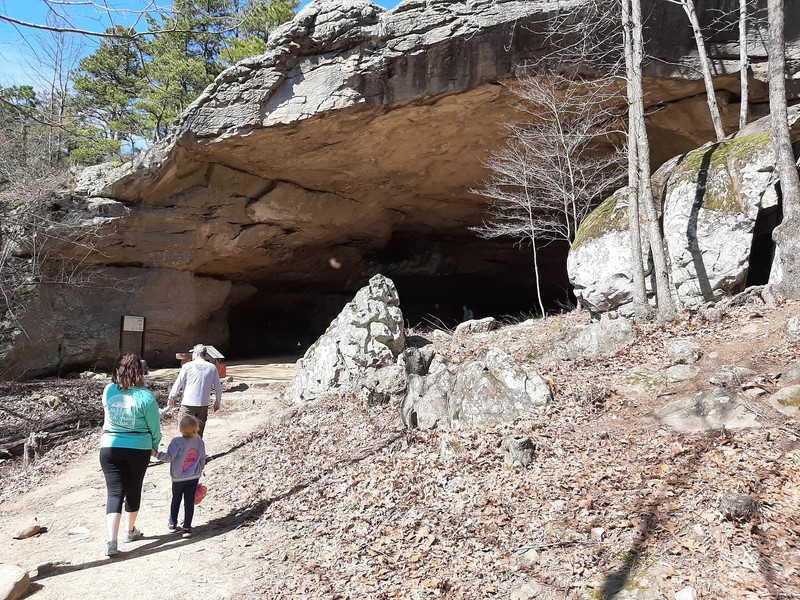Rock House Cave, Petit Jean Mountain, Arkansas
Introduction
Text-to-speech Audio
Images
The Rock House Cave at Petit Jean State Park in Arkansas was most likely at bluff dwelling or gathering place for pre-historic Native Americans.

A sign near the entrance at Rock House Cave at Petit Jean State Park in Arkansas displays some of the rock art that can be found inside the bluff dwelling.

A pictograph made by pre-historic Native Americans at Rock House Cave at Petit Jean State Park in Arkansas.

The entrance to Rock House Cave at Petit Jean State Park in Arkansas.

Backstory and Context
Text-to-speech Audio
Rock House Cave at Petit Jean State Park in Arkansas is accessible with a short hike that includes an overlook of Cedar Ridge Falls. "Turtle rocks" make up most of the hike from the state park parking lot to the cave. The hike is roughly 30 minutes, and well worth the effort.
The site features prehistoric rock art that includes images of a paddlefish, a deer head, a basket and many other animal and object shapes made using a mixture of animal fat and eggs, creating red, yellow and Black pigments. In the 1920s, Dr . T. W. Hardison, a physician living on Petit Jean Mountain, along with other explorers found hundreds of pictographs and petroglyphs created by prehistoric Native Americans on the mountain. The art is mostly dated between 1000-1500 CE, and is defined by red pigments, line drawings, animal forms, stick figures, and geometric shapes.
In more recent years, Arkansas state archaeologists have theorized that the Rock House Cave may have been considered a sacred site. There is some evidence that the Tanico people used the bluff to perform rites.
Unfortunately, in April of 2020, vandals did damage to some of the art at the Rock House Cave. Vandalism is an issue, which park rangers have been dealing with for years, and they remind visitors that Rock House Cave is an archaeological site and to that the rock art can easily be damaged.
Sources
Higgins Jr., Donald P. “Three Hundred Pictographs: Dr. Hardison and a Century of Petit Jean Mountain Rock Art Discovery.” Arkansas Archeologist 53 (June 2014): 1–36.
JONES, B. T. “Bringing Ancient Cultures to Life.” Legacy (National Association for Interpretation) 21, no. 5 (September 2010): 21–23.
“Preserving the Legacy of Rock Art.” Lancet 359, no. 9318 (May 11, 2002): 1707. doi:10.1016/S0140-6736(02)08551-3.
“Damage Done to Historic Native American Drawings at Petit Jean Mountain.” KNWA FOX24, April 2, 2020. https://www.nwahomepage.com/news/damage-done-to-historic-native-american-drawings-at-petit-jean-mountain/.
Christy Hendricks
Christy Hendricks
Christy Hendricks
Christy Hendricks
